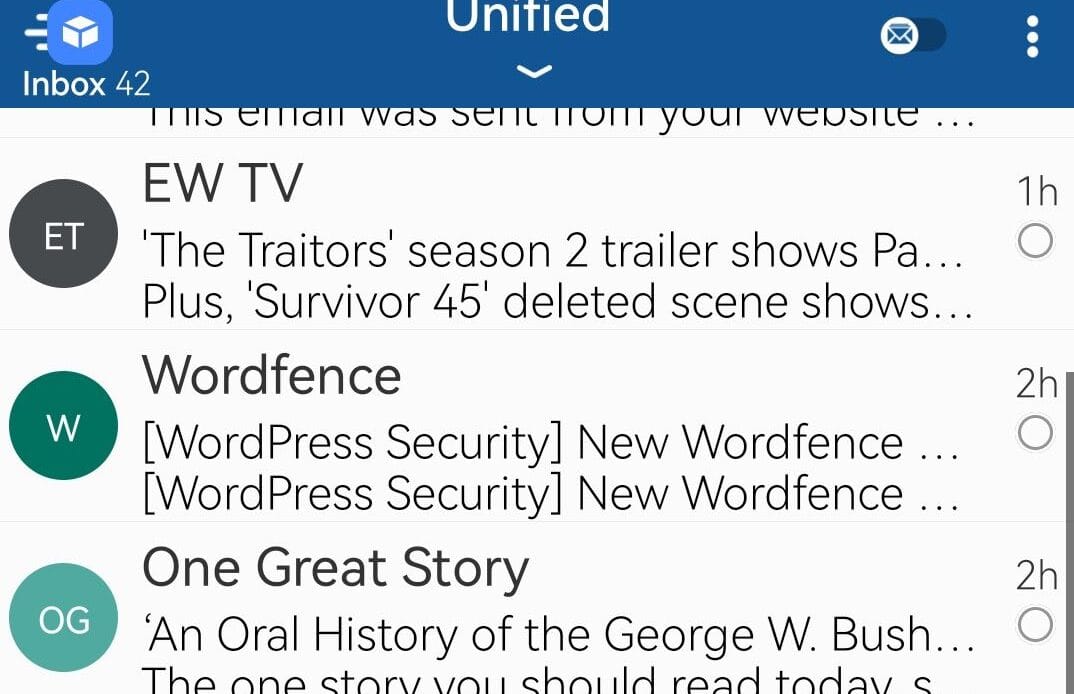
Above: BlueMail in use on Android.
BitDepth#1437 for December 18, 2023
There are three kinds of apps you can have on your smartphone. System apps come with the device and with few exceptions, can’t be removed.
Unfortunately, this also includes cheap games on lower cost devices that are embedded there by contract arrangement.
Then there are the apps that provide services.
Need to attend virtual meetings? For that, the requirement will be Zoom or Teams, according to corporate preference. A Spotify fan? You’ll need their app.
Finally, there are the optional apps that give your device character and serve you.
Here are some that work for me.
Generally, I avoid home screen and UI hacks. Most, like Nova Launcher, are cute, but don’t really change the way you work with the interface. Niagara Launcher is the exception, and it’s worth paying for.
Instead of screen after screen of app icons, Niagara replaces that virtual metaphor with a list you can configure with your most regularly accessed apps.
If you include a media player and the date and time, you can fit nine to ten apps in the list. There’s a convenient alphabetical key on the right that you can use to jump to software that’s not in your primary list.
If you can’t think of nine apps to place in the list, Niagara can keep track of the apps you access most frequently and add them to the list for you. If you agree, you can pin them there.
Give it a try. I’d get confused if it wasn’t running on the phone and that’s a clear indicator of an interface improvement.
It’s hard to find a proper word processor on the Play Store. You’ll find quite a few apps, but the files they produce don’t open properly in a desktop word processor.
If you use Office365, there’s a version for Android you can install.
Bouncing between operating systems, I prefer apps that work on multiple platforms and Evernote has a capable, if uninspired word processor that delivers clean and usable text wherever you open the app.
If your smartphone is online, every time you save, your data is copied to the cloud and then to every instance of the app you’ve installed.
The free Evernote plan synchronises two devices. If that’s enough for you, then you’re set.
I’m on the first tier Personal plan, and given my annoyance with subscription licensing for software, that means Evernote had to tick a lot of value boxes before I paid up.
It’s possible to build a simple to-do list using Evernote, but why not take advantage of all the great sorting and organising features of Microsoft’s free To Do app.
Create a list with this app and it instantly appears on every other device you’ve installed it on. I haven’t the words to say how much frustration this has saved me in groceries, hardware stores, and pharmacies.
It’s also useful for planning your working day, though I still use scraps of paper for that duty (the resonance of writing and viewing tasks just works better for me).
I have a deeply disturbing number of email addresses to keep track of and prefer to view emails with one catch-all app.
For Android, that’s BlueMail (if you don’t have access to Outlook), a well-designed and full-featured mail client for Android (and every other platform) that connects to many mail servers, including some that the stock Android mail client chokes on.
Corporate users can get additional business tools for a fee of US$12 per user monthly, but individuals get a great mail client.
Entertainment media on a smartphone should be seamless. If you need to access files downloaded to the device (many services have their own dedicated app), VLC is the go-to app for video files and as on the computer desktop, it will read any file encoding you can download.
For music and audio files, I can’t recommend my previous favorite, Rocket Player anymore. As an early adopter, I own a paid key for the app that circumvents the new subscription fee, but the app isn’t as smooth and bug-free as it was and is piling up bad reviews on the Play Store.
Consider AIMP and Player Pro, the stars of a much wider field of today’s audio players for Android. Both have functional free versions that support audiophile digital formats like FLAC.
Player Pro has an edge with an internet radio feature that self-populated with TT radio stations, though it couldn’t play some of the streams. It costs US$5 to get the ad-free Pro (Pro) version.
An e-pub digital book reader is an essential addition for the books you can never find the time to read. Moon Reader matches the Kindle app experience (easy setup, disappears in use) and like Player Pro, has an ad-free pro version that costs US$9, though that price has been known to vary during the year.
The reason most people will pay more for a premium smartphone is to make use of its high-quality camera system.
Third party options for alternative capture app controls on Android are severely limited. It’s often possible to download Google’s stock Android camera capture app onto premium brand smartphones, but I haven’t found any benefit to doing that.
Samsung offers a professional app for its smartphones from the S21 onward called Expert Raw, but you must download it from the Samsung App Store (sign-up required).
ProShot (US$6.99) doesn’t add any features to my Huawei P30 Pro that the standard phone app doesn’t already have, but you can download an “evaluator” app you can use to see if it unlocks features the standard app hides.
There are, however, several apps for Android that you can consider for serious image editing on the device.
My former favorite for Android image editing, DevMacGuyver’s A Photo Editor (there are multiple apps with the same name on the Play Store) is showing its age. Edits on other apps are at least as good and often both better and faster.
The best option for most folks is Snapseed, which looks identical to the version that Google bought from Nik Software almost a decade ago, but which has been quietly improved under the hood. Snapseed also supports direct editing of RAW captures from the phone.
To get something better than Snapseed, you can try Lightroom Mobile, which offers some useful features for free but to get access to all its tools, you need to have an Adobe subscription.
On1 Photo Raw Mobile, a newer alternative, is very much a new product without the long development years that have polished Snapseed and Lightroom.


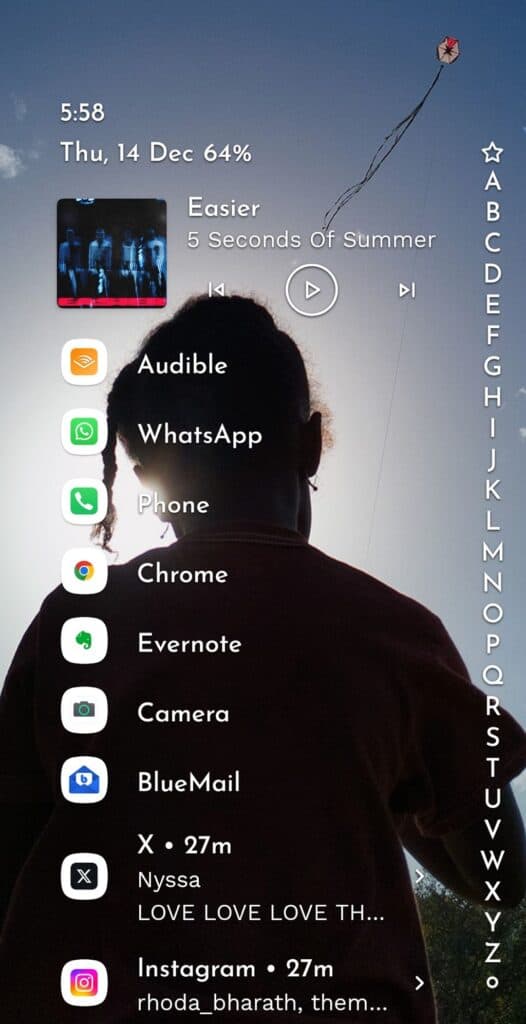
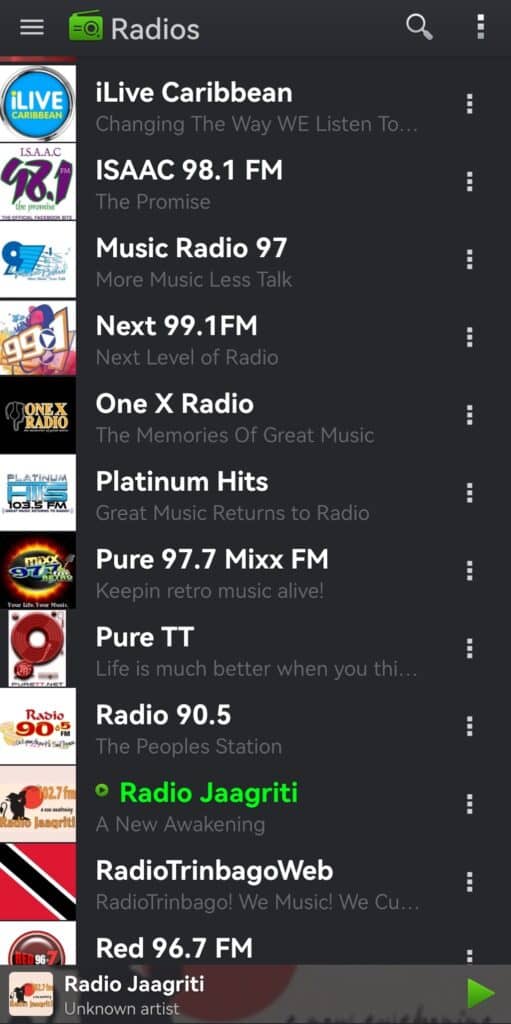
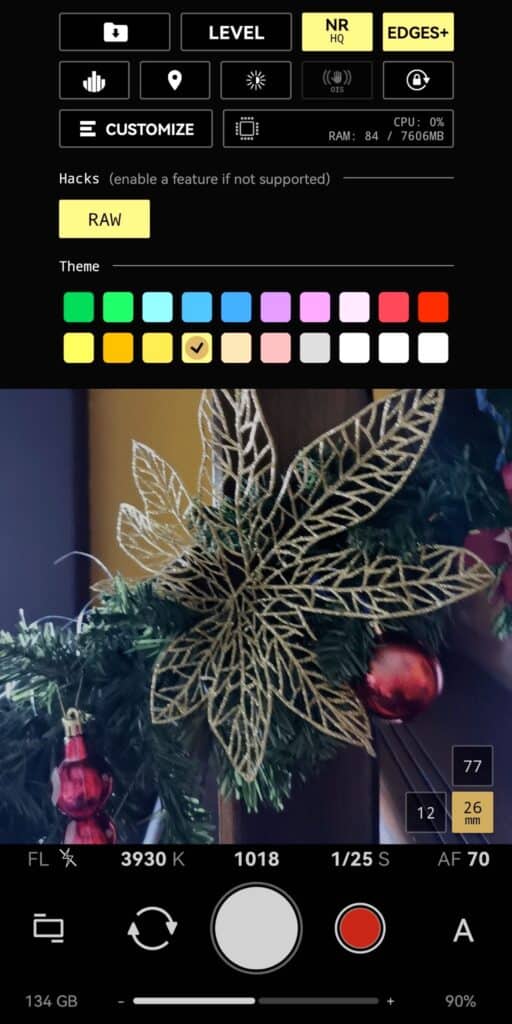
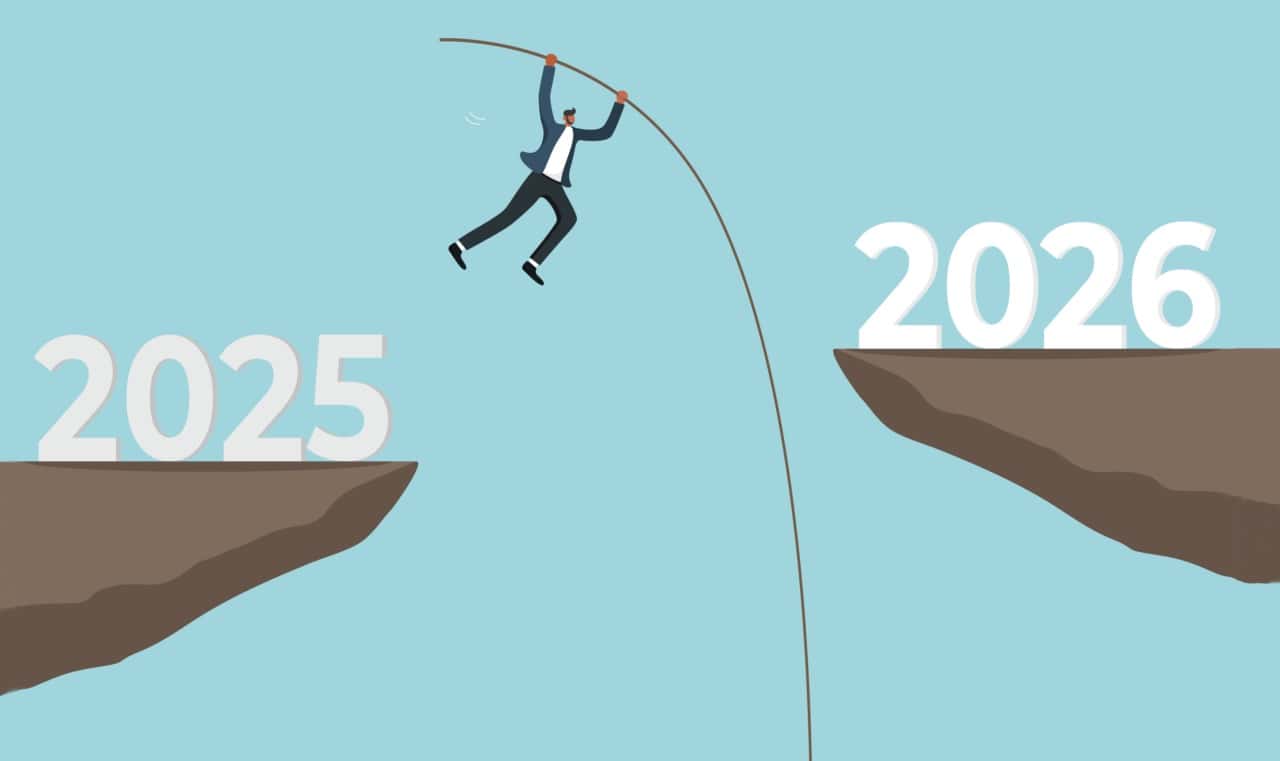

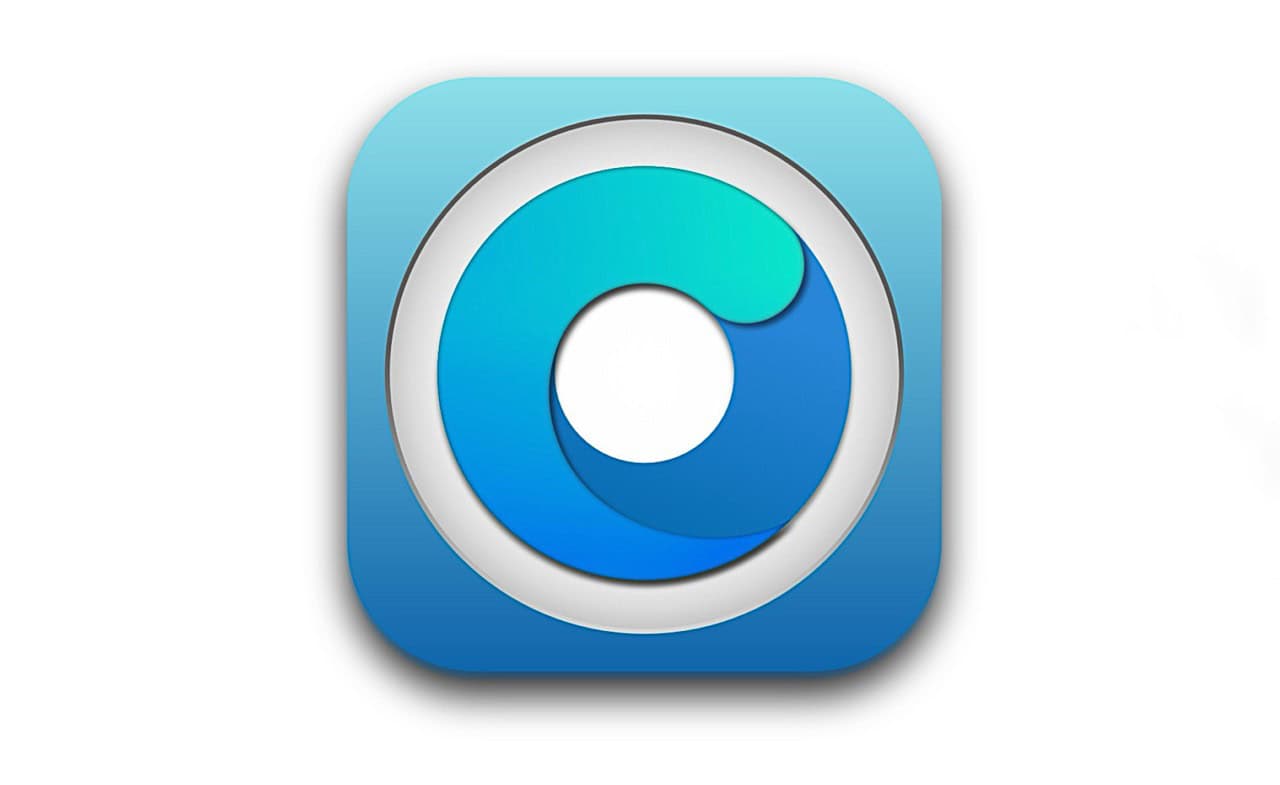

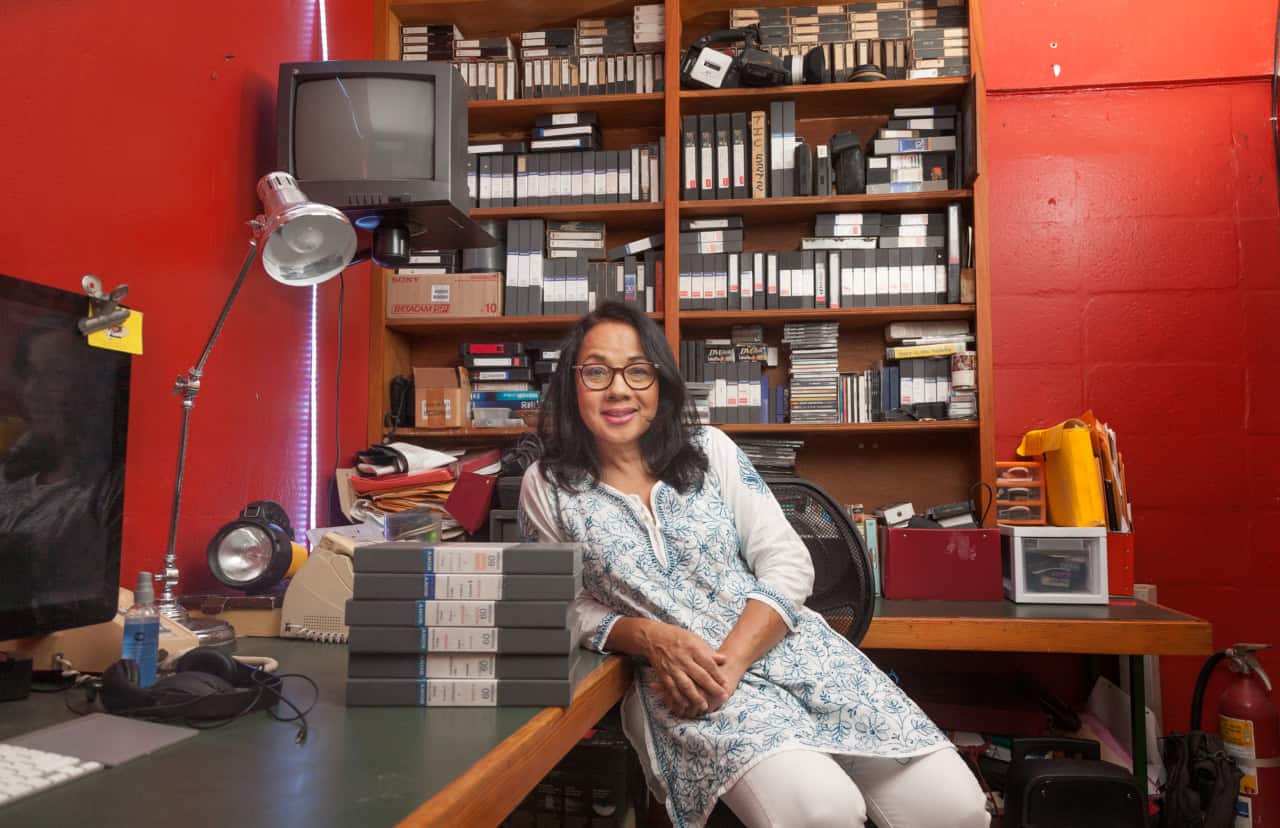

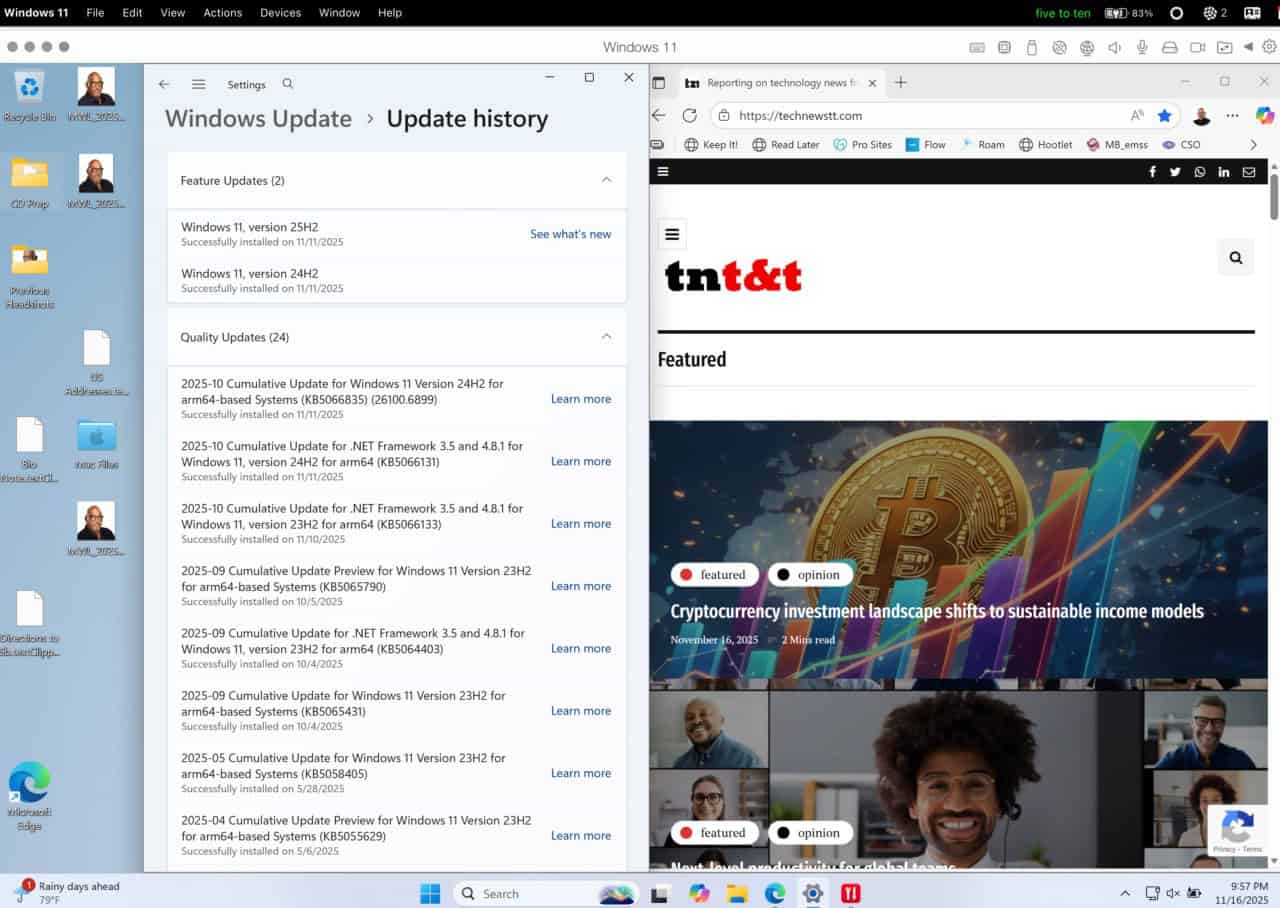
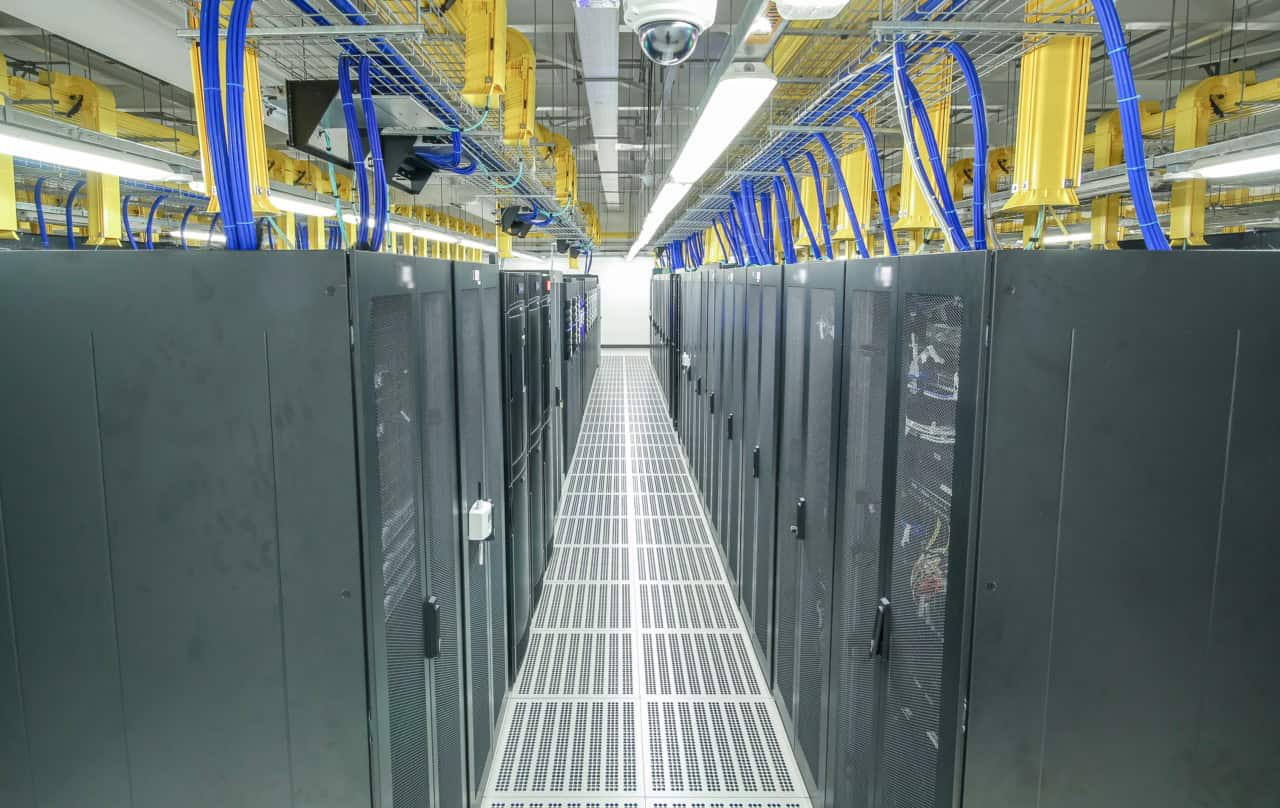
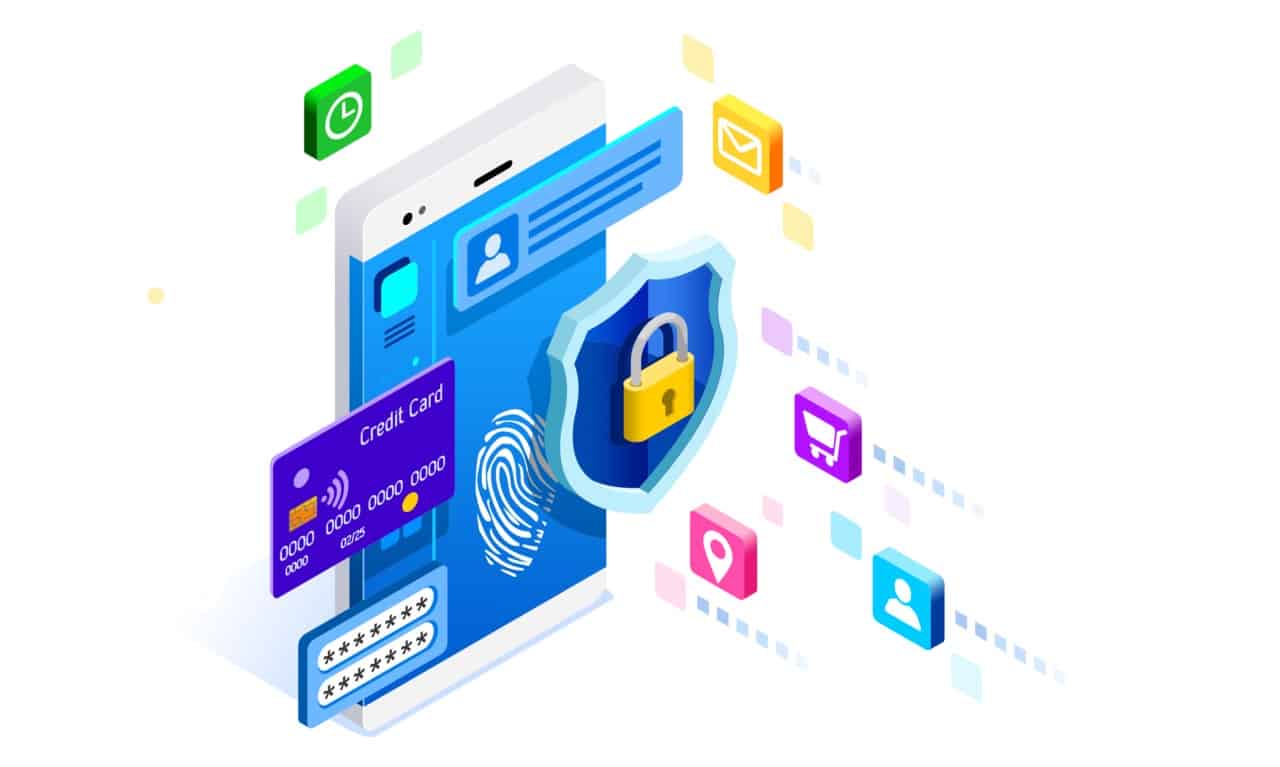


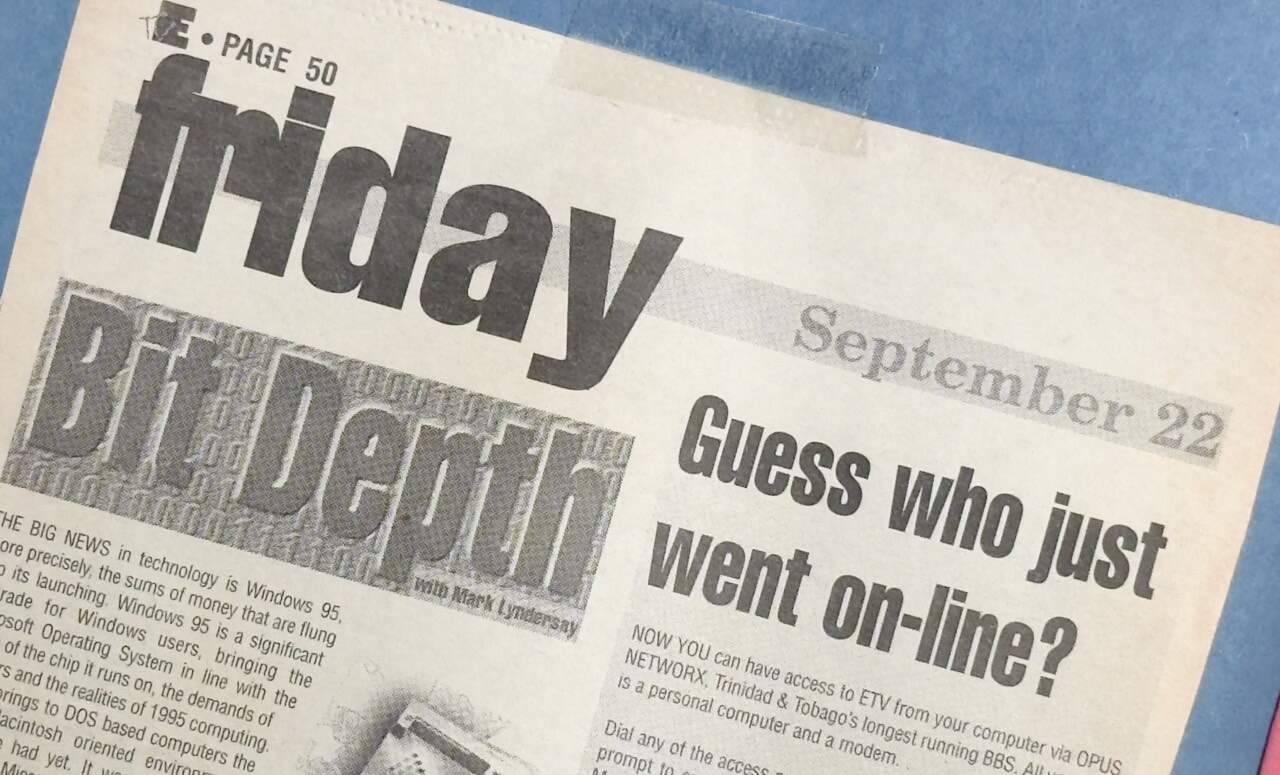
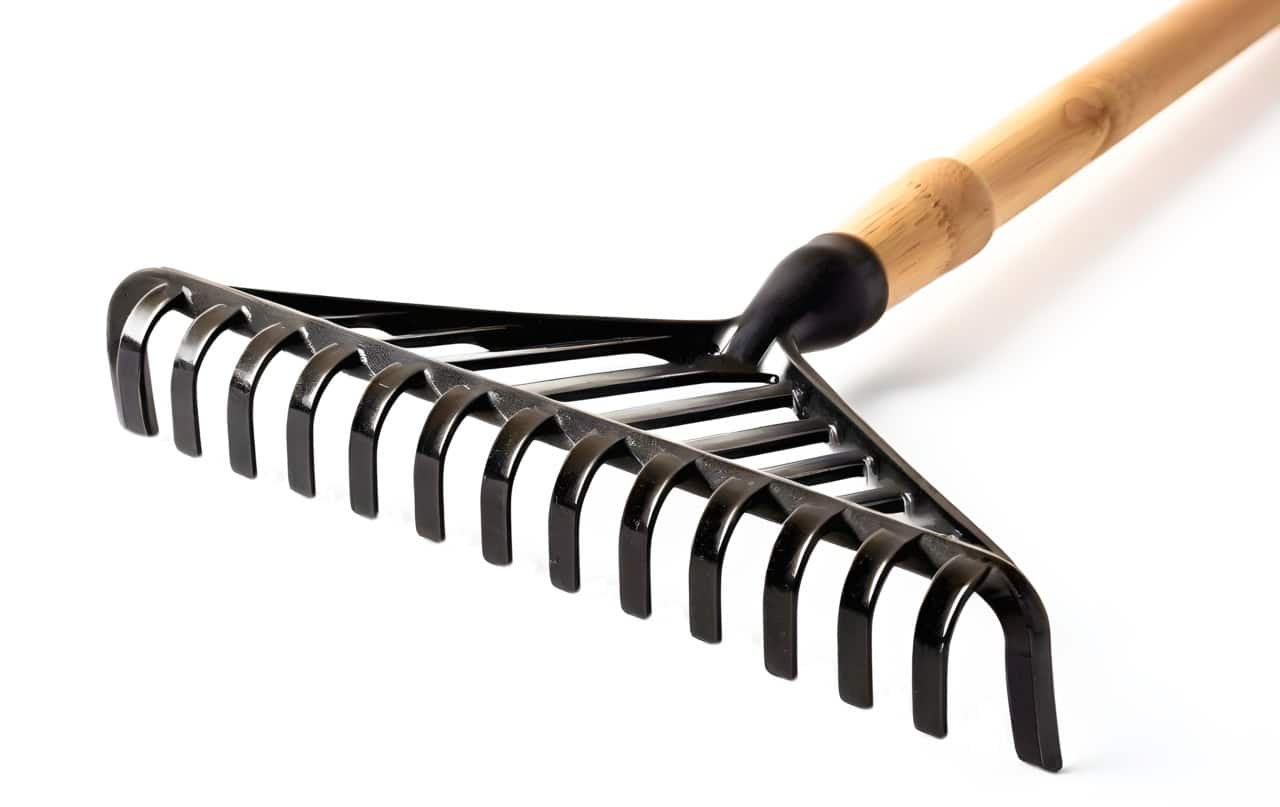


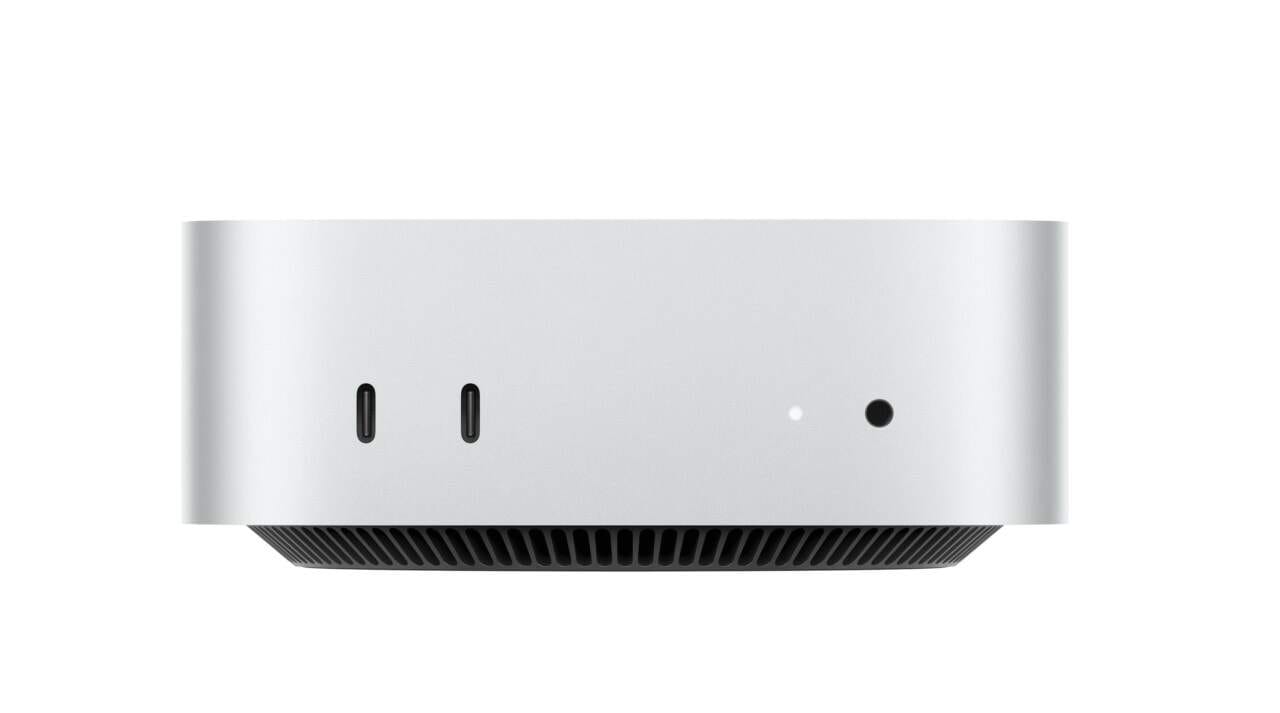







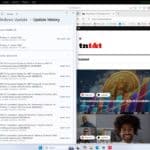










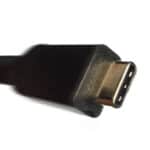

[…] Caribbean – There are three kinds of apps you can have on your smartphone. System apps come with the device and with few exceptions, can’t be removed… more […]